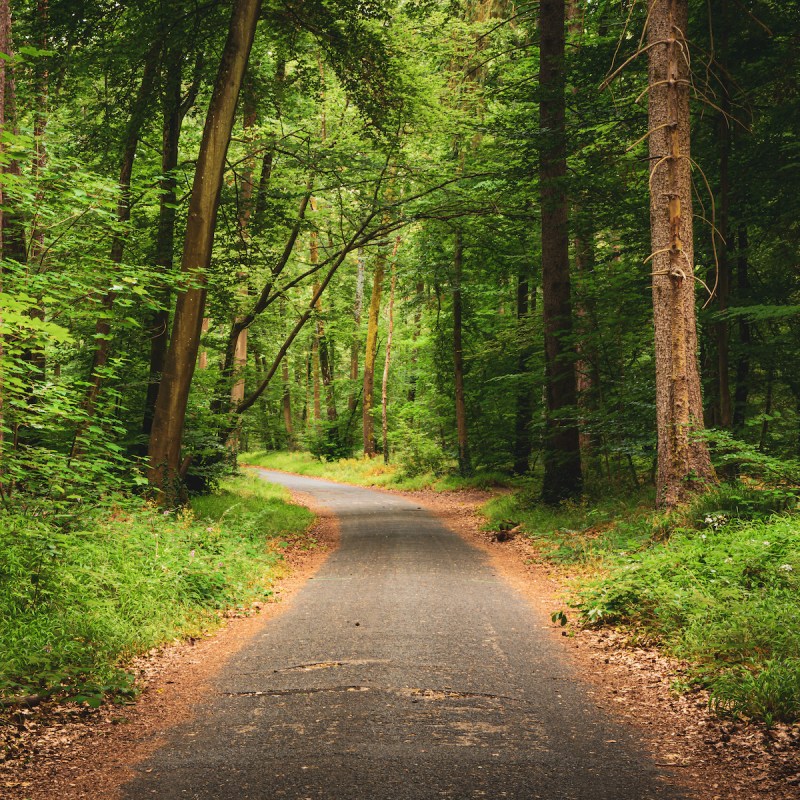
One of the things I love so much about France is that it is so green. Even within Paris, there are more than 100,000 trees and some 400 miles of streets lined with trees. Having lived in Paris with my dog, I was forever looking out for a nice forest at weekends for her to have a good run, and you can find them not just on the city’s doorstep, forests such as the Bois de Boulogne, but there are large forests within a handful of miles from the center. This is not something I have ever experienced in any other large city.
Videos by TravelAwaits
Heading further inland, you have a vast choice of forests, different in every region. Personally, I am a fan of a deciduous forest, one that changes according to the season, changing the color of the leaves and dropping them over winter, only to start up again in spring with that fresh, young green. But there are also coniferous forests, usually found in slightly colder climates, such as those found in the southeast of France near the Alps. That said, one of my favorite forests, pine, in France is found along the southwest Atlantic Coast, where it is nice and warm.
Here are some of my favorite forests worth exploring, for many personal reasons, in no particular order, and simply because I know that region best, quite a few within easy reach of the capital.

1. Forêt De Fontainebleau
Seine-et-Marne
Just 37 miles south of Paris lies the Château de Fontainebleau, formerly a fort, later turned into a swanky palace, and the only château in France which played home to each and every king of France over a span of nearly 800 years. And the kings loved to hunt, so the 25,000 hectares (61,776 acres) of forest surrounding the grounds were a perfect addition. The forest is a UNESCO-recognized biosphere reserve and home to hundreds of thousands of plant species and more than 50 different kinds of mammals, including deer, a firm favorite with the kings’ hunting parties.
On my first visit, I thought I could combine walkies with a bit of history, but, alas, no dogs were allowed into the château’s grounds. So, it was longer walkies instead. It has always been fun to just stop somewhere and explore the forest, including one time, when I arrived at the perfect time for the entire forest floor to be covered in bluebells. Absolutely stunning, but I did not dare to walk the dog, for fear of her — and me — trampling those delicate flowers. But what a sight!
Pro Tip: If you are not sure where to start, there is a guide that you can buy at the local tourism information bureau and which lists some 20 trails crisscrossing the forest.

2. Bois De Boulogne
Paris
This was my regular weekend place to walk through the forest, let the dog off the lead, smell the forest, walk around the various lakes inside it, and enjoy the different seasons. There is a tall ginkgo tree right between Lac Superieur, the upper lake, and Lac Inferieur, the lower lake, which turns bright yellow in autumn, making for a spectacular sight.
For after your walk, a small kiosk sells not only good coffee but some decent pommes frites as well. Walk along to the Caverne du Cascade, another pond with a faux-waterfall, to see plenty of ducks and even some capybaras — which made a home there after reportedly being released into the wild by an unhappy pet owner. There are also some giant sequoias, which are my favorite trees in the park.
Pro Tip: Right by the park lies the restaurant La Grande Cascade, an Art Nouveau beauty. This is pricey fine dining in a gorgeous setting. You might want to change out of your walking gear first for this one.

3. Forêt Domaniale De Meudon
Hautes-de-Seine
This forest in a southwestern suburb of Paris has it all: a château, an observatory, and endless trails through the forest. Once the hunting grounds of the Lord of Meudon, who built the palace in the 17th century, there are also duck ponds, and even a selection of megalithic menhirs dotted throughout the forest.
While most people head to the side of the château and walk there — which is also lovely — my favorite part is on the right coming from Meudon, by the Etang de Meudon, the lake. Here you can clamber to the top of the hill, right next to the restaurant La Terrasse de l’Etang, which has superb food and a great terrace overlooking the lake. Turn left by the wall and meander through the forest, until you head down again to the lake. The forest is home to the loveliest little striped squirrels, plus some red squirrels, and the lake is lively with ducks and swans.
Pro Tip: While you are there, head to the Meudon Rodin Museum, the former home of Rodin in Meudon. It makes a great addition to the Musée Rodin in Paris.

4. La Forêt Des Landes
Les Landes, Gascogne
This forest provided shelter when I went camping in the southwest of France along the Atlantic Coast as a child with my parents. It is a pine forest that stretches from the Arcachon Basin all the way down toward Biarritz, the corner of the region, where France borders Spain. This part of France was once a flat wasteland of sand, stagnant swamps, and moors, unsuitable to habitation, with nothing much to recommend it.
It was Napoleon III — the same guy who together with Baron Haussmann also turned Paris into the Paris we all love — who saw the potential of the land and ordered the inhabitants to build drainage channels and plant the tall maritime pine trees that are so iconic of the region. Today, the forest is the largest man-made woodland in Western Europe and is not only still providing the population with various industries, but also some of my childhood’s favorite campsites and beach vacation places with shade.
This area is one of France’s most popular vacation regions, with the forest and the nearby endless sandy beaches providing many choices of activities, from horseback riding to biking and from hiking to surfing.
Pro Tip: Explore the region around Arcachon, the wonderful Cap Ferret peninsula, the Dune du Pilat, Europe’s tallest sand dune, and indulge in Arcachon’s famous oysters.

5. Irati Forest
Basque Country
In the western Pyrenees, stretching across the borders of France and Spain in the heart of the Basque Country, lies the Irati Forest. As easily reached from Biarritz as from San Sebastian, the forest — and the mountain range — lie between the Atlantic and Mediterranean coasts of France. This forest is about as wild as it gets in western Europe, with large stretches completely uninhabited and inaccessible unless on foot.
Despite being a managed forest, there is so much space dedicated to nature instead of to humans that you can find a plethora of wildlife, from deer to wild boar, even wolves, to a thriving bird population, including plenty of woodpeckers, and migratory birds such as the griffon vulture. It is well worth bringing your binoculars when going on a hike. But with the vast area of the forest, it’s better to either follow marked trails or go with a group and guide. These links are from the Spanish side but include maps, so you can reach the points from France as well.
Pro Tip: The nearest relatively large community in the area on the French side is probably Saint-Jean-Pied-de-Port. In and around the small town lie plenty of rural hotels, campsites, and RV parks, from where you can reach into the forest. It is also part of the Camino de Santiago.

6. Forêt d’Huelgoat
Brittany
This quite-magical forest is strewn with gigantic moss-covered boulders, which were tossed — according to local legend — during a tantrum thrown by Gargantua, a giant. You can find it in central Brittany near the small community of Huelgoat. Walking through the dense forest, watered by the Argent river, you come across not only gigantic rocks but also all sorts of other mythical places.
There is the Ménage de la Vierge, locally believed to be the Virgin Mary’s first house; there is the Camp d’Artus, King Arthur’s campsite, and there is one rock in particular, which, if you find just the right spot, you can move. Not roll away, luckily, as it weighs more than 100 tons, but you can make it sort of shiver.
Near the forest are more delights, such as a valley full of boulders in the nearby Gorges du Corong, and another valley that is full of saints. The Vallee des Saints is an ongoing project that will eventually see 1,000 statues representing Brittany’s saints dotted throughout. Today there are around 50 statues, and you can even sponsor one if you wish to leave your mark in Brittany.
Pro Tip: Brittany is perfect for a road trip, setting off from, for example, Saint-Malo, and winding your way along the coast, occasionally dipping in for sights and experiences such as the Forest of Huelgoat.
